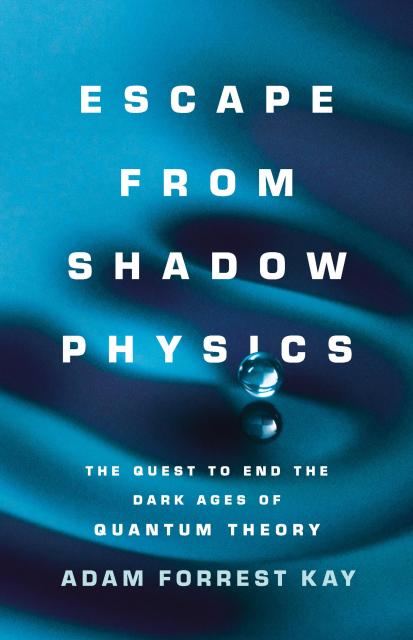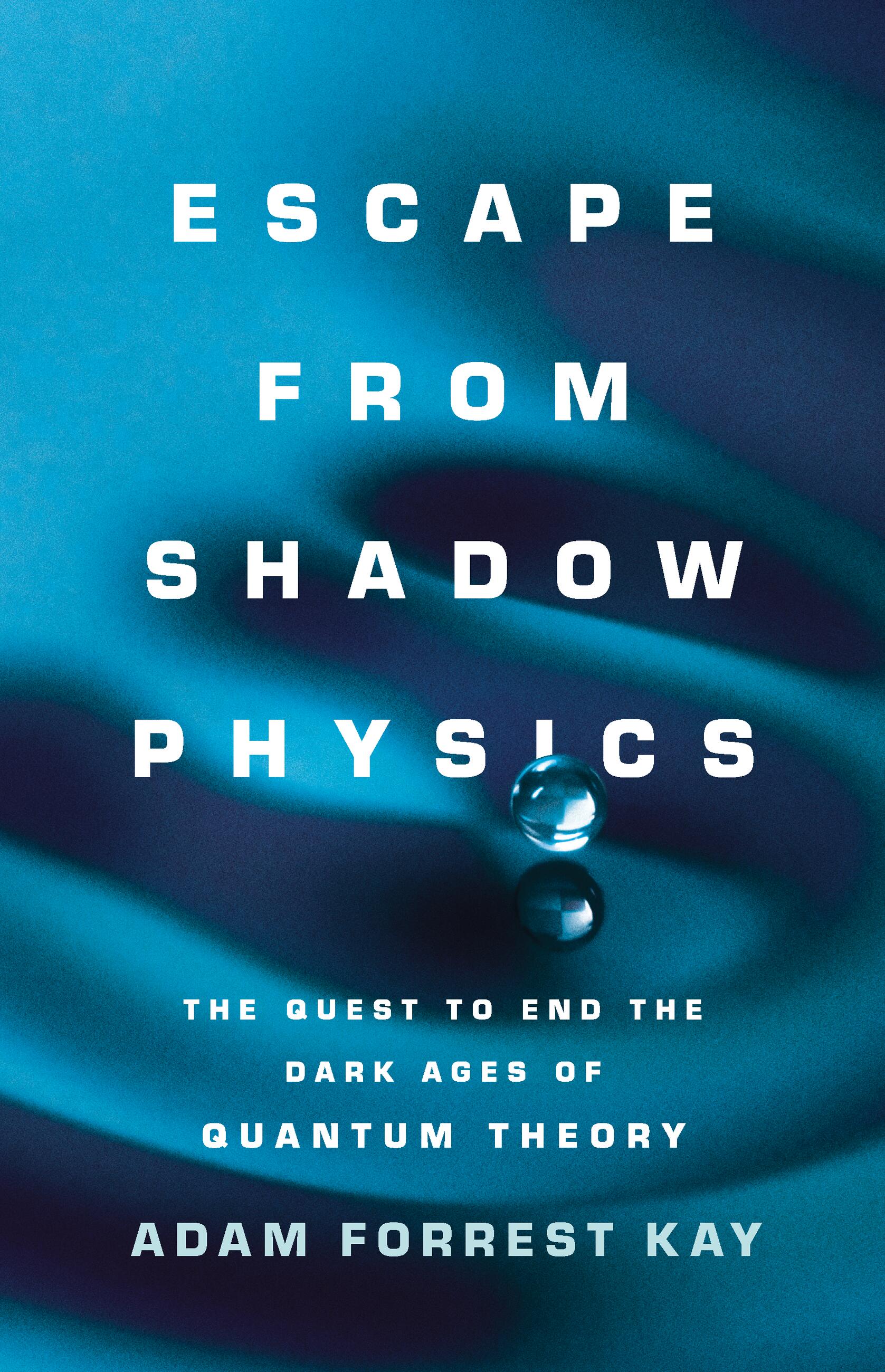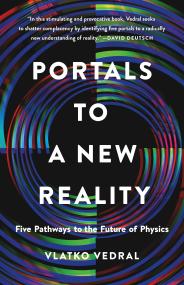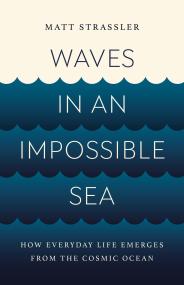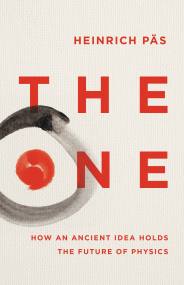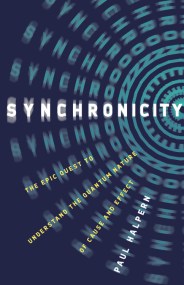By clicking “Accept,” you agree to the use of cookies and similar technologies on your device as set forth in our Cookie Policy and our Privacy Policy. Please note that certain cookies are essential for this website to function properly and do not require user consent to be deployed.
Escape from Shadow Physics
The Quest to End the Dark Ages of Quantum Theory
Contributors
By Adam Kay
Formats and Prices
- On Sale
- Jun 18, 2024
- Page Count
- 496 pages
- Publisher
- Basic Books
- ISBN-13
- 9781541675780
Price
$35.00Price
$45.00 CADFormat
Format:
- Hardcover $35.00 $45.00 CAD
- ebook $19.99 $25.99 CAD
This item is a preorder. Your payment method will be charged immediately, and the product is expected to ship on or around June 18, 2024. This date is subject to change due to shipping delays beyond our control.
Buy from Other Retailers:
The “artfully written…splendid history of classical and quantum physics” (Science) that “rightfully highlights the limitations of current physics” (Wall Street Journal) and argues for a revolutionary new understanding of quantum mechanics
The received wisdom in quantum physics is that, at the deepest levels of reality, there are no actual causes for atomic events. This idea led to the outlandish belief that quantum objects—indeed, reality itself—aren’t real unless shaped by human measurement. Einstein mocked this idea, asking whether his bed spread out across his room unless he looked at it. And yet it remains one of the most influential ideas in science and our culture.
In Escape from Shadow Physics, Adam Forrest Kay takes up Einstein’s torch: reality isn’t mysterious or dependent on human measurement, but predictable and independent of us. At the heart of his argument is groundbreaking research with little drops of oil. These droplets behave as particles do in the long-overlooked quantum theory of pilot waves; crucially, they showcase quantum behavior while being described by classical physics. And that classical-quantum interface points to a true understanding of quantum mechanics and a reasonable universe.
A bold and essential reset of the field, Escape from Shadow Physics describes the kind of true scientific revolution that comes along just once—or less—in a century.
Genre:
-
Times Literary Supplement Book of the Year
-
"Energetically written in short chapters interspersed with digressions into other episodes of scientific wrongturnings, Escape From Shadow Physics is consistently interesting...Mr.Kay rightly highlights the limitations of current physics."Andrew Crumey, Wall Street Journal
-
“[Kay’s] writing on this topic is both precise and seductive… I could gladly spend a year — or at least an academic semester — with this book.”Forbes
-
"Artfully written... a splendid history of classical and quantum physics as well as a convincing exposition of hydrodynamic quantum analogs."Paul Halpern, Science
-
“Vigorous and engaging…there is plenty to intrigue and entertain.”Times Literary Supplement
-
“Permeating this agreeably readable work are [Kay’s] boundless curiosity, mastery of physics, and command of science history.”Washington Independent Review of Books
-
“Escape from Shadow Physics is a singular addition to the popular literature on quantum interpretations.”Physics World
-
“A rigorous investigation… Readers will be enlightened.”Publishers Weekly
-
“In the bouncing groove of an oil droplet, Adam Forrest Kay finds a new way to look at quantum mechanics—one that replaces randomness and mystery with new knowledge. Supported by a brilliantly told history and philosophy of physics, this book will change how you think about the field’s past. And it may just set a new path for its future.”Stephon Alexander, author of Fear of a Black Universe
-
“Whatever you think of Kay’s efforts to overturn the Copenhagen Interpretation of quantum mechanics, and to justify Einstein by re-establishing classical norms of causality and determinism, his history of the whole wave/particle debate, from ancient Greece onwards, is authoritative and encyclopedic—and also intriguingly suggests that the purely scientific arguments were in part outweighed by an element of the straightforwardly human.”Michael Frayn, playwright and novelist
-
"Reads like a novel, in which the biographies of major physical concepts are intertwined with the biographies of the great minds that shaped them. The reader will be surprised by the clarity of Kay’s arguments."Ana María Cetto, author of The Emerging Quantum
-
“Kay has written a book that lays out with great clarity the central issue in modern physics: Are quantum-mechanical probabilities quite different in nature from all the others in physics and life? The reader will enjoy fascinating details from a great sweep of history and Kay’s skill in explaining key technical facts with enviable simplicity.”Julian Barbour, author of The Janus Point
-
“Adam Kay has written a rollicking account of the history of science — and human intellectual folly. Rare in its irreverence towards the hallowed ground of quantum foundations, Escape from Shadow Physics is a must read for quantum dissidents.”John W. M. Bush, Massachusetts Institute of Technology
-
“Adam Kay has accomplished a real tour de force: he has covered almost the entire history of science to illustrate the failure of instrumentalist or positivist approaches; this leads him to a radical critique of the current dominant view of quantum physics, known as the Copenhagen interpretation. Kay's critique is based in part on the pilot-wave theory and the hydrodynamic quantum analogues. This book will be a landmark in the history and philosophy of physics.”Jean Bricmont, Catholic University of Louvain
Newsletter Signup
By clicking ‘Sign Up,’ I acknowledge that I have read and agree to Hachette Book Group’s Privacy Policy and Terms of Use
